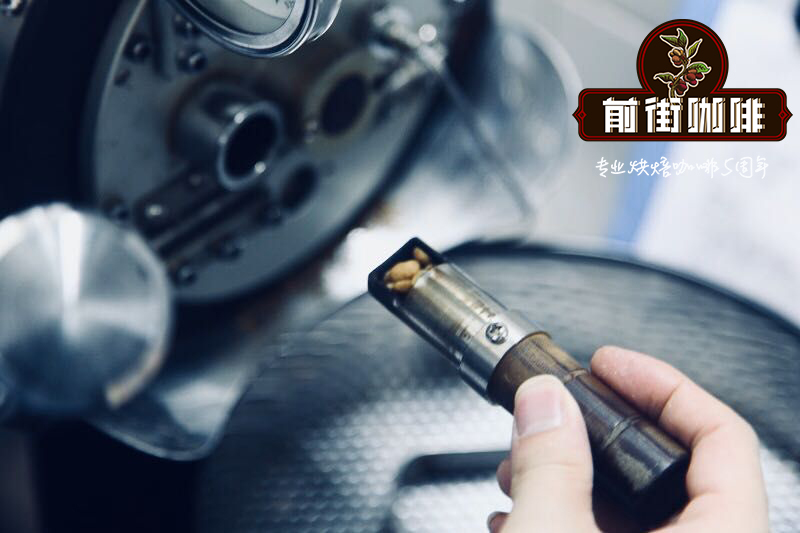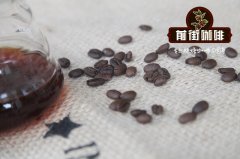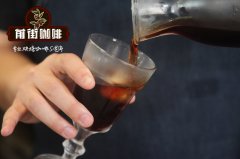How do you drink the coffee powder? Why does your coffee come out astringent? What are the reasons for the astringent coffee?

Professional coffee knowledge exchange more coffee bean information please follow the coffee workshop (Wechat official account cafe_style)
Astringent taste-this taste bound with persimmons and cucumbers sometimes unfortunately appears in coffee. Once a good cup of coffee appears astringent taste, that is, white jade is slightly flawed, and this astringent taste can easily become more intense as the temperature of the coffee drops, becoming sour and bitter. Many students, especially those in the junior class, tend to make coffee with astringent taste. Even skilled baristas will make astringent taste if they operate it improperly. What is more troubling is that many people do not know which link this astringent taste comes from. As for how to avoid it through adjustment, I am at a loss as to what to do. To sort out this article, it can be regarded as analyzing the "astringency" with you.
What is astringency?
Astringency exists in many foods, needless to say persimmon and cucumber, many immature fruits are inevitably astringent, so there is the word "green and astringent", and astringency is often found in common drinks such as red wine, tea and coffee.
Scientific analysis, astringent taste is different from sweet and sour, it is not a kind of taste, strictly speaking, it should be called "astringent", it is the rough feeling created by polyphenols in food in the mouth. Polyphenols are found in a variety of fruits as well as tea, red wine, chocolate and coffee. Chlorogenic acid, tannic acid and catechin all belong to polyphenols.
So what substances does the astringency in coffee come from?
The astringency in coffee mainly comes from dicaffeoylquinic acid (Decaffeoylquinic aic) degraded by chlorogenic acid (Chlorogenic acid) during roasting. In addition, a small amount of tartaric acid (Tartaric acid), also known as "gluconic acid", is also the source of astringency. The astringency in coffee is mainly due to the condensation of dicaffeoylquinic acid with the protein in oral saliva and produces a wrinkled astringency in the oral epithelial tissue.
So, why on earth do these astringency come into being? How can it be avoided? -- this is the focus of everyone's concern.
Many people blame the astringency of coffee on baristas or bakers, thinking that it is caused by improper extraction or roasting, but in fact there are many reasons for astringency. Let's analyze them one by one!
First of all, the part of raw beans.
The difference of astringency caused by the difference of variety. Robesta beans tend to be more astringent than Arabica beans, because the chlorogenic acid content of Arabica beans is only 5.5%, while that of Robesta beans is 7%. As a result, the content of "dicaffeoylquinic acid" is higher after baking. This is one of the reasons why some international fast food chains tend to be "bitter and astringent"-the heavy use of cheap Robosta beans.
Of course, quality-conscious coffee shops of course use Arabica beans. Arabica beans also have different astringency due to their different growth environment. High-altitude excellent Arabica beans because of the mature period of full fruit and rich in sugar, brewed coffee is often good flavor and round taste without astringency, while low real estate beans tend to have a thin flavor, astringency will also be more prominent because of the overall taste.
No matter what kind of variety or what kind of production conditions, unripe beans are a major culprit causing astringency.
Like many fruits, immature coffee beans contain more chlorogenic acid, so unripe beans are listed as defective. The higher the grade of coffee beans, the less the number of defective beans. In Xiumen Coffee, although the raw beans we got are specialty coffee with very low defect rate, we have to hand-select them again before baking to ensure the purity of the taste.
Analysis of the common taste of coffee-- astringency
(fine coffee only picks ripe coffee fruit.)
Analysis of the common taste of coffee-- astringency
Analysis of the common taste of coffee-- astringency
In addition, the silver skin on raw coffee beans is also the cause of astringency, too much silver skin attached to raw beans, especially when it can not be removed in baking, it is easy to cause the astringency of coffee.
Even if the variety, picking and processing of the front raw bean are very in place, it is easy to produce astringency if it is not operated properly in the baking process. What for?
On the one hand, if excessive firepower causes uneven baking "outer coke endogenesis", it is easy to produce astringent feeling and raw bean taste.
On the other hand, poor smoke exhaust or too small opening of the air valve in the baking process will also make the coffee taste muddy and easy to form a sense of astringency in the cup.
Of course, very shallow roasting can also cause an obvious sense of astringency, and it is occasionally heard that some roasters "bake beans shallowly or even before the end of an explosion in order to show the acidity of coffee." this operation is especially aimed at beans with high hardness such as Kenya, which is almost inevitable if the beans are produced before the explosion.
The last step of astringency is extraction-how many baristas should be complaining here!
Analysis of the common taste of coffee-- astringency
However, if not professional or careful, no matter how good the coffee beans will be destroyed in the hands of baristas, resulting in a sense of astringency, for the following reasons:
First, the water temperature is too low, of course, there is no absolute standard for extraction water temperature, and it varies depending on the practice and coffee beans, but interested friends might as well do an experiment and try the extraction with a water temperature below 80 degrees, the astringency will be very obvious. Of course, if you are worried about the astringency of your coffee, re-measure the water temperature or raise the extraction temperature and try again!
Second, the extraction time is too long. Astringent feelings can be caused by excessive extraction along with other miscellaneous smells. In fact, these two reasons will have a similar phenomenon when making tea.
Third, the degree of grinding is too fine. Too fine grinding greatly increases the chances of miscellaneous taste and astringency. We all have a deep understanding of this in the course on grinding degree regulation in class.
The above is the main cause of astringency. So, how to avoid the production of astringency?
Analysis of the common taste of coffee-- astringency
It is still the check from raw beans to baking to extraction.
Good varieties and good growing environment of coffee beans, when picking to "choose only ripe coffee fruit" and get rid of those unripe beans.
Keep the smoke discharge unobstructed and proper firepower in the baking process, so that the raw beans are baked evenly and the internal substances are transformed completely.
Proper operation, proper water temperature, grinding degree and extraction time are essential during extraction.
In addition, the astringency in Espresso has something to do with the unevenness of filling, which should be grasped in detail.
Although astringency is not as strong as bitterness and sour thorns, it is like a ghost, sometimes it can be clearly felt in the coffee just extracted, sometimes it is not obvious when it is hot, and it will be magnified when the coffee becomes cold, and this feeling affects our sense of taste. it will linger in the mouth for a long time, bringing us unhappiness. Therefore, to extract a good cup of coffee, we should first avoid astringency and miscellaneous taste, and then pursue the richness and balance of taste on the premise of pure taste.
Important Notice :
前街咖啡 FrontStreet Coffee has moved to new addredd:
FrontStreet Coffee Address: 315,Donghua East Road,GuangZhou
Tel:020 38364473
- Prev

How do you drink the coffee powder? How long can I keep coffee beans or coffee powder?
Professional coffee knowledge exchange more coffee bean information Please pay attention to the coffee workshop (Wechat official account cafe_style) the shelf life and freshness of fresh coffee beans are two different things, fresh coffee beans will begin to exhaust (mainly carbon dioxide), the largest amount will be discharged in the first two or three days, which lasts for about a week. When the gas is completely discharged, the coffee beans will slowly taste
- Next

How can I make coffee without a coffee maker? Why do more and more people like hand flushing?
Professional coffee knowledge exchange more coffee bean information please follow the coffee workshop (Wechat official account cafe_style) for me, the most important reason is of course delicious! Just use hot water to extract the beautiful substances in coffee beans, do not add anything else, this simple and direct brewing way, it is easier to drink the taste of coffee itself! Different varieties / different producing areas /
Related
- Beginners will see the "Coffee pull flower" guide!
- What is the difference between ice blog purified milk and ordinary milk coffee?
- Why is the Philippines the largest producer of crops in Liberia?
- For coffee extraction, should the fine powder be retained?
- How does extracted espresso fill pressed powder? How much strength does it take to press the powder?
- How to make jasmine cold extract coffee? Is the jasmine + latte good?
- Will this little toy really make the coffee taste better? How does Lily Drip affect coffee extraction?
- Will the action of slapping the filter cup also affect coffee extraction?
- What's the difference between powder-to-water ratio and powder-to-liquid ratio?
- What is the Ethiopian local species? What does it have to do with Heirloom native species?

